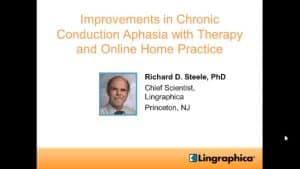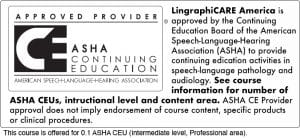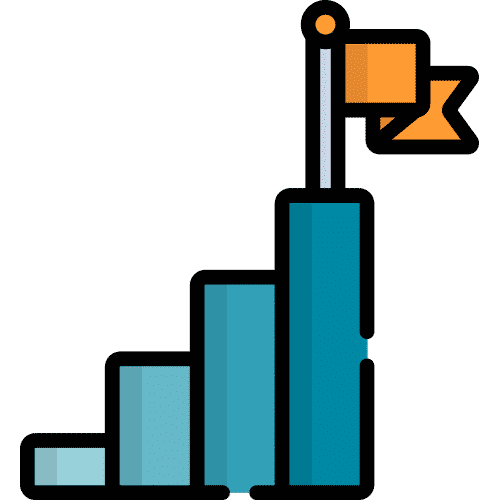 In our course on the impact of speech therapy and TalkPath Therapy exercises on chronic conduction aphasia, Speech Language Pathologists (SLPs) will learn about specific areas of improvement seen following a person’s resumption of speech therapy. We’ll explore key aspects, including:
In our course on the impact of speech therapy and TalkPath Therapy exercises on chronic conduction aphasia, Speech Language Pathologists (SLPs) will learn about specific areas of improvement seen following a person’s resumption of speech therapy. We’ll explore key aspects, including:
-
- characterizing the magnitudes of overall improvements documented among persons with chronic conduction aphasia following additional structured therapy that includes online home practice
- describing observed patterns between initial WAB and CETI assessment scores and final assignments to either conduction aphasia or anomic aphasia
- discussing the role of outcome studies to the processes of improving clinical practice, while identifying topics for follow-on clinical and experimental research
Lingraphica’s course “Improvements In Chronic Conduction Aphasia With Therapy And Online Home Practice” reviews the improvements seen in people with chronic conduction aphasia after they have resumed speech therapy treatment combined with TalkPath Therapy exercises. Research shows that participants demonstrated significant improvements, including impairment and functional communication levels. This was determined using the Western Aphasia Battery and Communicative Effectiveness Index assessments.
We will set a foundation by exploring the specifics of improvement patterns based on the type of aphasia present at the outset. The course then focuses specifically on chronic aphasia. This course will explain the details of the study done, including inclusion criteria, demographics of the subject sample, and treatment data collected. We will also describe the assessments used. These include impairment level assessments and functional communication assessments. We will also discuss assessment administrators and their role in the assessment process.
This course will also provide a description of the methods used to assess participants. We will discuss students’ tests and identify significant differences of means pre- and post-assessment, as well as one-way analysis variance, which is used to identify significant subgroup differences.

Finally we will conclude with an examination of the results of the study. We will explore the Western Aphasia Batter (WAB), and the significant differences documented on all subtests. We will also review the significant differences documented on 13 of 16 Communication Effectiveness Index (CETI) assessments. Additionally, this course will describe significant differences in patients re-assigned to anomic aphasia on discharge. Our discussion of results will cover opportunities for improvement in chronic conduction aphasia, heterogeneity of groups of individuals with chronic conduction aphasia, and the utility for clinical service delivery to this group. We will end with a discussion of the importance of all of these things in clinical practice and the implications for further research.
Improvements In Chronic Conduction Aphasia With Therapy And Online Home Practice
To learn more about treatment of conduction aphasia, watch our free CE course,
“Improvements In Chronic Conduction Aphasia With Therapy And Online Home Practice
”




